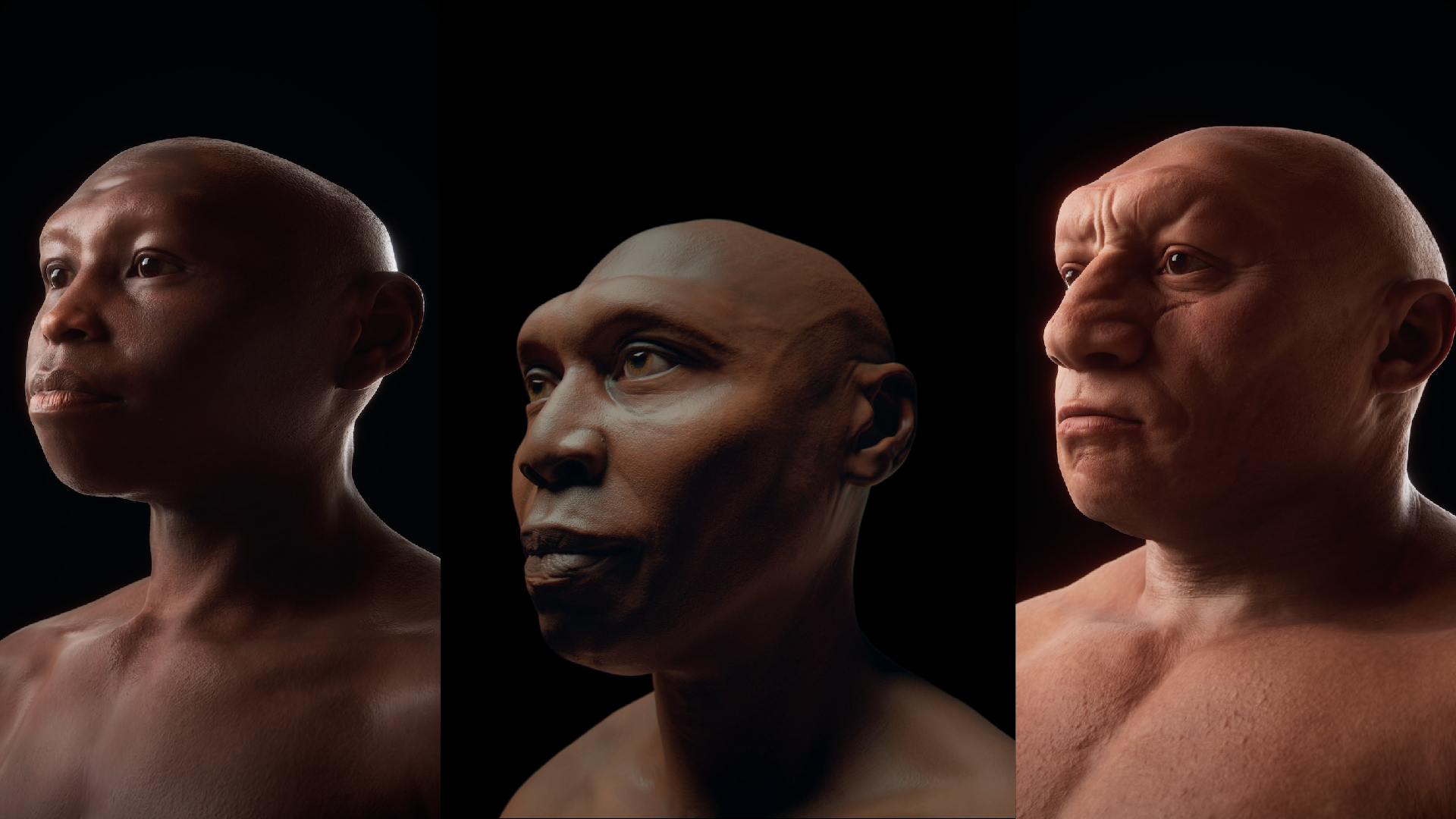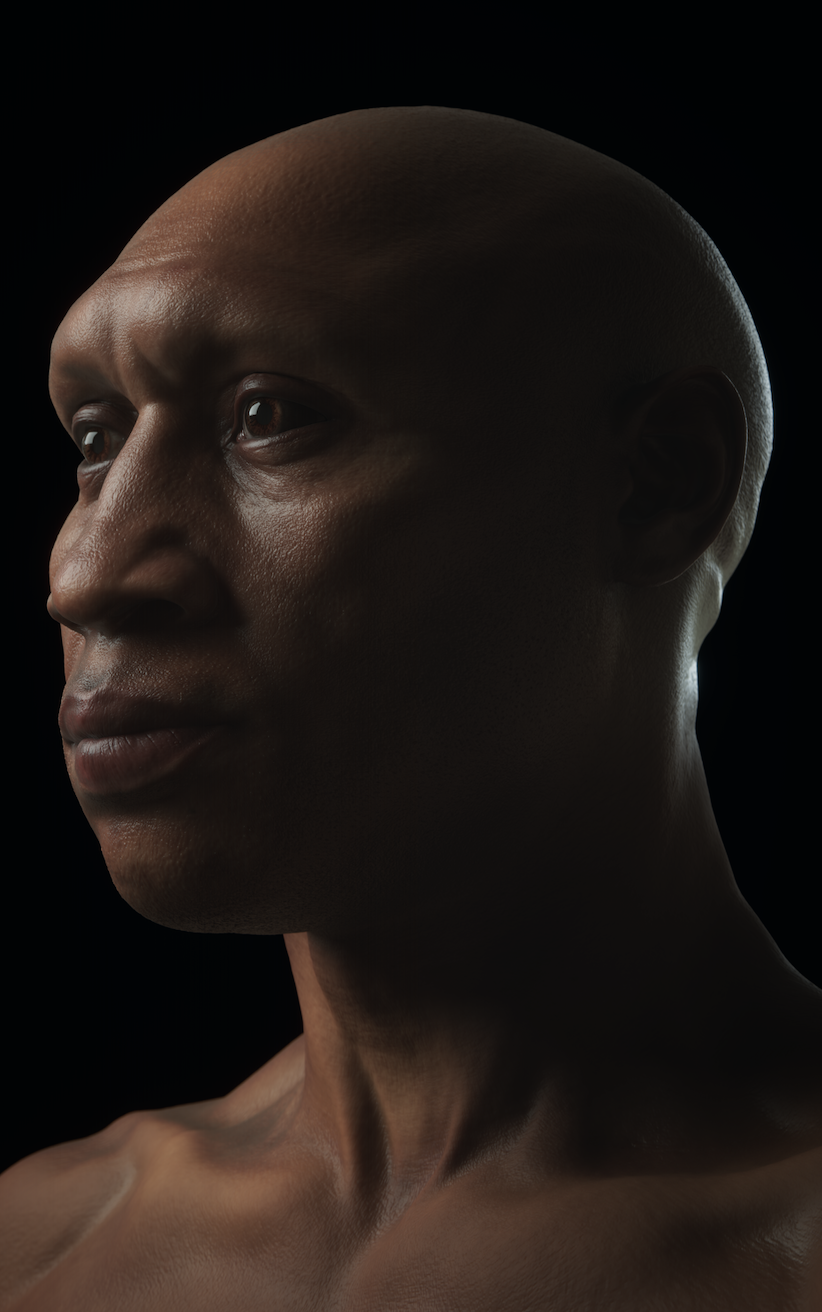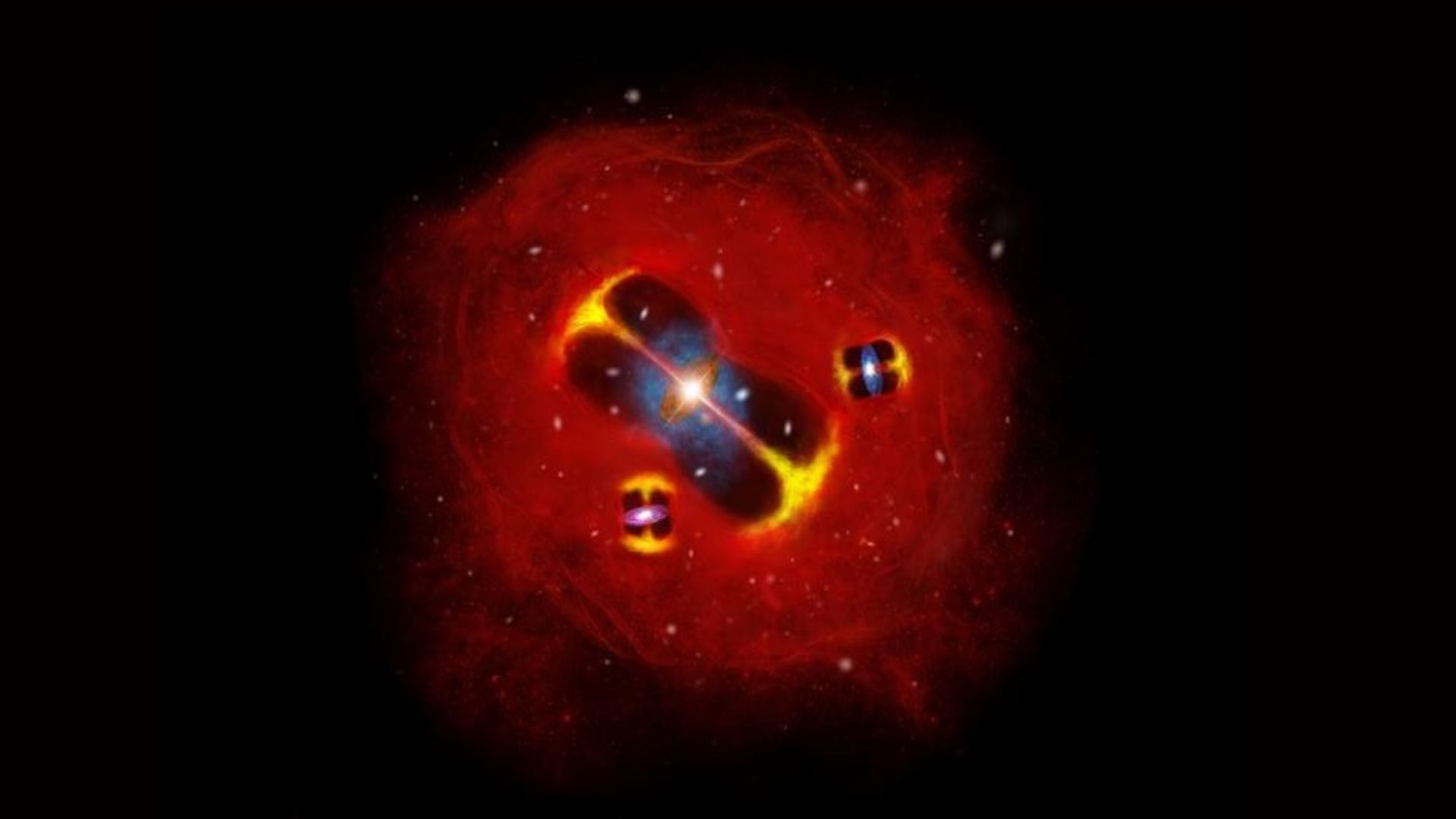Stunning facial reconstructions of 'hobbit,' Neanderthal and Homo erectus bring human relatives to life
A new documentary brings early human history to life with a "scientifically accurate" collection of hyper-real 3D models.

Four lifelike reconstructions of prehistoric humans have been unveiled — including a model of a species often dubbed "the hobbit," which, as an adult, was about the same height as a modern 4-year-old.
The 3D models are featured in the upcoming five-part documentary series "Human," which explores the extraordinary story of human evolution over the past 300,000 years, from our rise in Africa, to our migration into Eurasia and across the globe, including to our journey through the Americas after going along the Bering Land Bridge during the last ice age.
Scientists think that, in addition to Homo sapiens, at least six other human species existed around the time our species first emerged in Africa. The models from the series are based on three of these — Homo erectus, Homo floresiensis and Neanderthals — and the earliest known H. sapiens specimen.
"These are the most scientifically accurate collection of hyper-real 3D models of human species ever put on TV that we know of," paleoanthropologist and series presenter Ella Al-Shamahi said in a statement, adding that no TV show has brought this many ancient human species to life in such a way.
The production team for the series — a collaboration between the BBC Studios Science Unit and the U.S. science program "NOVA" — developed the 3D models using the latest available scientific data.
First, the team used hundreds of cameras to take photographs of actors who were chosen because their body shapes closely resembled the ancient humans being reconstructed, according to the statement. These images were then stitched together digitally to create a 3D model.
Related: Our mixed-up human family: 8 human relatives that went extinct (and 1 that didn't)
Get the world’s most fascinating discoveries delivered straight to your inbox.
Next, the team adapted the 3D models to reflect the anatomy of each ancient human individual. They worked closely with the series' scientific consultants, who drew on the known fossil record to guide the reconstructions.

Finally, the team determined the skin and eye color of the models based on genetic studies of these ancient humans. The Neanderthal model, for example, features a light skin tone, as indicated by DNA evidence from genes linked to pigmentation. This light skin color would have helped Neanderthals with vitamin D production, as they lived at high latitudes in Eurasia that had low levels of sunlight.
The series will fly through human evolution, showing the diverse places and climates we've experienced and the extraordinary animals we encountered — and hunted — along the way. Al-Shamahi will introduce viewers to different types of archaic humans who lived throughout history.
For example, Homo erectus lived from at least 1.89 million to 110,000 years ago, originating in Africa before spreading into Asia and possibly parts of Europe. H. erectus was the first human species fully adapted for exclusively upright walking and is widely believed to have been the first human species to use fire.
Homo floresiensis is nicknamed "the hobbit" for its small size; it stood around 3.5 feet (1 meter) tall. This species inhabited the Indonesian island of Flores as recently as 50,000 years ago and is known to have used tools.
Neanderthals, with their cold-adapted bodies, first appeared more than 400,000 years ago, and lived across Europe, the Middle East and Central Asia, before going extinct around 34,000 years ago. They even bred with modern humans for thousands of years.
The early H. sapiens model, meanwhile, is based on fossils from Jebel Irhoud, Morocco, dated to about 300,000 years ago. These remains exhibit a mix of modern and archaic features and suggest an earlier origin for our species than previously believed.
"Human" will premiere in the United Kingdom Monday (July 14) on BBC Two, and all episodes will be available to stream on BBC iPlayer for U.K. residents only. The series will air in the United States on Sept. 17 at 9 p.m. ET/8 p.m. CT on PBS. It will also be available to stream at pbs.org/nova, NOVA on YouTube and the PBS app.
Human evolution quiz: What do you know about Homo sapiens?

Aristos is a freelance science reporter who has previously worked for Newsweek, IBTimes UK and The World Weekly. He is particularly focused on archaeology and paleontology, although he has covered a wide variety of topics ranging from astronomy and mental health, to geology and the natural world. He holds a joint bachelor's degree in English and history from the University of Nottingham, and a master's from City St George's, University of London.
You must confirm your public display name before commenting
Please logout and then login again, you will then be prompted to enter your display name.


